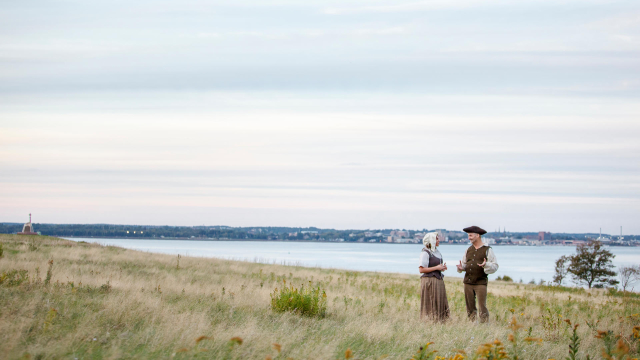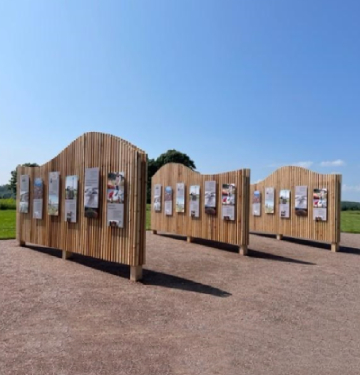
Woven stories of Mi’kmaq and Acadian communities
Skmaqn-Port-la-Joye-Fort Amherst National Historic Site: partnerships with Mi’kmaq and Acadian communities bring to life its diverse history.
One site with shared histories
Across time, 4 cultures converged at Skmaqn-Port-la-Joye-Fort Amherst National Historic Site and called the site home:
- Mi’kmaq
- French
- Acadian
- British
Friendships, alliances, and conflicts amongst these 4 cultures throughout the 18th century forged the history of what would become Prince Edward Island.
Evolving name
1958
The site was designated Fort Amherst National Historic Park in 1958 in recognition of the fort’s role as the seat of British colonial government from 1758 to 1768. It was also a port of entry for island settlers, and a place of conflict in the English-French struggle for dominance in North America. The Deportation of the Acadians in 1758 also occurred there. The name of the site and the reasons for its national historic significance have since been expanded, not once but twice, to better reflect its shared history.

1985
In 1985, its name was changed to Port-la-Joye-Fort Amherst National Historic Site of Canada to reflect its French and Acadian history. Established by the French in 1720, the site was the first permanent European settlement on Île Saint-Jean (today Prince Edward Island). From 1720 to 1758, Port-la-Joye was a port of entry for Acadian settlers to the island. Acadian families established farms in this new settlement, the remnants of which can still be seen today!
2018
The site’s name changed again in 2018. Mi’kmaq community members raised concerns about Jeffrey Amherst’s stated views in support of the eradication of Indigenous populations during his time as Governor-General of British North America in the 1760s. They originally proposed removing Amherst’s name from the site. However, following a meeting between Mi’kmaq leaders and the Historic Sites and Monuments Board of Canada, they requested adding a Mi’kmaw name to the site rather than erasing the difficult history Amherst’s name represents.
In 2018, Skmaqn (“waiting place”) was added to the name of the national historic site to recognize the continuing Mi’kmaq presence in Epekwitk (Prince Edward Island) over millennia.
Working together towards a broader understanding
In 2019, Parks Canada staff initiated work with Mi’kmaq, Acadian, and British communities to enhance stories told at the national historic site. One of the outcomes is new, multilingual interpretive panels and an outdoor exhibit that weave the site’s Mi’kmaq, French, Acadian, and British histories.
Visitors to the site can learn about the traditional territory of Mi’kma’ki, Mi’kmaq presence across thousands of years, as well as their friendship and alliances with European settlers. Beginning in the 1500s, the site was an important place for Mi’kmaq and French settlers to hold ceremonies, feast together, and renew their friendship.


The exhibit does not shy away from conflict and controversy. Visitors learn about the displacement of the Mi’kmaq after British surveys in the 1760s failed to set aside any land for the island’s Indigenous people, despite Peace and Friendship treaties. They also learn about the Acadian Deportation (Grand Dérangement). When the British took possession of Isle Saint-Jean in 1758, they ordered a mass deportation of the French and Acadian population. Over half of the deported died en-route to France.
Woven Stories, an eighteen minute interpretive film shares different perspectives of the site’s complex history in English, French and Mi’kmaq.

Skmaqn-Port-la-Joye-Fort Amherst National Historic Site offers visitors a rich, meaningful history from the perspectives and connections between four distinct cultures.
- Date modified :


